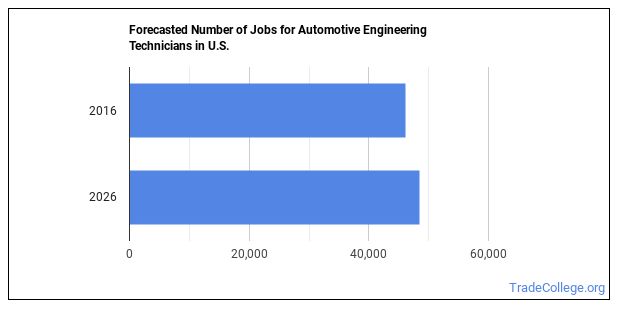Self-Employment Among Automotive Technicians: Statistics, Opportunities, and How to Get Started

Understanding Self-Employment Rates for Automotive Technicians
Self-employment offers skilled automotive technicians the chance to run their own businesses, set their own schedules, and build lasting client relationships. According to recent occupational data, approximately 19% of automotive service technicians and mechanics are self-employed . This figure reflects a significant portion of the industry, highlighting the popularity and feasibility of independent work in this field [1] .
For context, the remaining workforce is primarily employed by private for-profit businesses, dealerships, and government agencies. The self-employment rate underscores both the opportunities and challenges faced by those who choose to operate independently.
The Self-Employed Technician: What Does It Mean?
Self-employed automotive technicians typically own and operate their own repair shops or offer mobile services. They are responsible for every aspect of their business, from diagnostics and repairs to customer service, marketing, and regulatory compliance. Some choose to specialize in certain vehicle types, brands, or services, while others offer comprehensive maintenance and repair solutions.
This career path can be highly rewarding for those who value autonomy, hands-on work, and the ability to grow a business based on reputation and skill. However, it also comes with unique challenges, including the need for business acumen, initial capital investment, and ongoing compliance with local and state regulations.
How to Become a Self-Employed Automotive Technician
If you are considering the transition to self-employment, there are several steps you can take to prepare:
1. Gain Experience and Credentials
Most self-employed technicians start after working for dealerships or independent shops, accumulating hands-on experience and industry knowledge. Certifications such as ASE (Automotive Service Excellence) are highly regarded and can enhance credibility with customers.

Source: tradecollege.org
According to the Bureau of Labor Statistics, employers generally prefer technicians who have completed postsecondary training programs, which can range from certificates to associate degrees [2] . These programs provide foundational skills in automotive diagnostics, repair, and customer service.
2. Create a Business Plan
Successful self-employment begins with a comprehensive business plan. This includes defining your target market, choosing a location, outlining services offered, estimating startup costs, and projecting income and expenses. Consider whether you will operate a brick-and-mortar shop, a mobile repair service, or a specialty business focused on specific vehicle makes or systems.
Research local competition, licensing requirements, and insurance needs to ensure your business is compliant from the start. State and local agencies typically provide guidance on business registration, zoning, and environmental regulations. You can search for your local Small Business Development Center or Department of Consumer Affairs for step-by-step assistance.
3. Secure Financing and Equipment
Start-up costs for an automotive repair business can vary widely. Expenses may include leasing or purchasing a workspace, buying tools and diagnostic equipment, acquiring insurance, and marketing. Many technicians use personal savings, small business loans, or equipment financing to cover these costs.
To explore small business financing options, consider contacting your local bank, credit union, or searching for “SBA loans for auto repair businesses” through the U.S. Small Business Administration’s website.
4. Obtain Required Licenses and Insurance
Regulations for automotive repair businesses differ by state and municipality. Common requirements include business licenses, sales tax permits, and environmental permits for handling hazardous materials. Liability insurance, property insurance, and worker’s compensation (if you hire employees) are typically required or strongly recommended. You can start by searching for your state’s Department of Motor Vehicles or Department of Consumer Affairs for automotive business licensing requirements.
5. Build Your Customer Base
Word-of-mouth, online reviews, and local advertising are essential for attracting and retaining customers. Many self-employed technicians leverage social media, business directories, and community events to increase visibility. Offering exceptional service, transparent pricing, and clear communication can help build a loyal clientele and encourage referrals.
Consider joining local business associations or automotive industry groups, which often provide networking and promotional opportunities.
Real-World Example: Starting a Mobile Auto Repair Service
John, a certified technician with a decade of dealership experience, decided to start his own mobile auto repair business. He invested in a reliable service van, equipped it with essential diagnostic tools, and obtained the necessary business licenses and insurance. John began by servicing family and friends, gradually expanding his customer base through positive reviews and local online classifieds.

Source: tradecollege.org
By focusing on convenience, transparent pricing, and prompt service, John grew his business steadily. He now serves a wide area, works flexible hours, and enjoys the autonomy that self-employment provides. His success story illustrates how technicians can leverage experience and customer service skills to thrive independently.
Challenges and Solutions for Self-Employed Technicians
While self-employment offers many benefits, it also comes with obstacles. Common challenges include managing cash flow, marketing effectively, and keeping up with the latest automotive technologies and regulations. Many technicians find it helpful to join trade associations, participate in ongoing training, and use accounting software to streamline business operations.
Technicians should also prepare for variable workloads and income fluctuations, especially during the initial stages of business development. Building a financial safety net and investing in continuous learning can help mitigate these risks.
Alternative Pathways: Franchise and Specialty Services
For those seeking structure and brand recognition, automotive repair franchise opportunities are available. Franchises provide established business models, marketing support, and training, though they require upfront fees and ongoing royalties. Alternatively, technicians can specialize in high-demand areas such as hybrid/electric vehicle repair, diagnostics, or performance tuning, which may command higher rates and attract niche clients.
Job Outlook and Industry Trends
The job outlook for automotive technicians is stable, with employment projected to grow about 3% from 2023 to 2033, which is in line with the average for all occupations [2] . The continued complexity of automotive systems and the shift toward electric vehicles may create new opportunities for specialized services and mobile repair businesses.
Technicians willing to adapt to these changes, pursue certifications, and invest in advanced diagnostic tools will likely remain competitive and in high demand.
How to Find Resources and Get Started
To explore self-employment as an automotive technician:
- Research state and local licensing requirements by searching for your state’s “automotive repair business licensing” through the Department of Motor Vehicles or Consumer Affairs.
- Visit the U.S. Small Business Administration’s website for information on funding, business planning, and regulatory compliance.
- Network with other self-employed technicians through local business associations, trade shows, and online forums.
- Consider enrolling in advanced training or certification programs to enhance your skills and marketability.
With careful planning, dedication, and a commitment to customer service, becoming a self-employed automotive technician can be a rewarding and sustainable career path.






